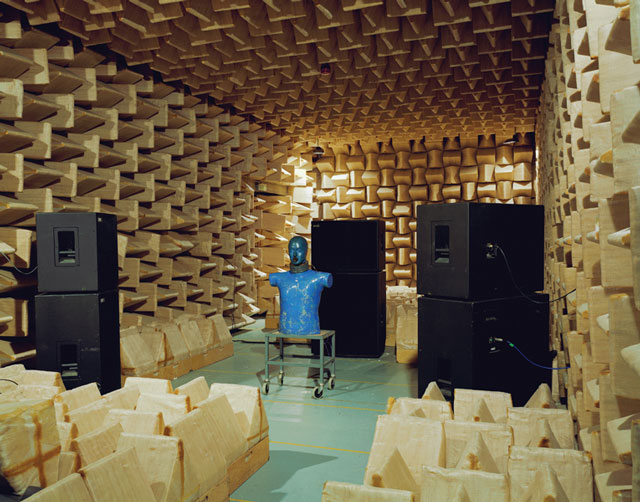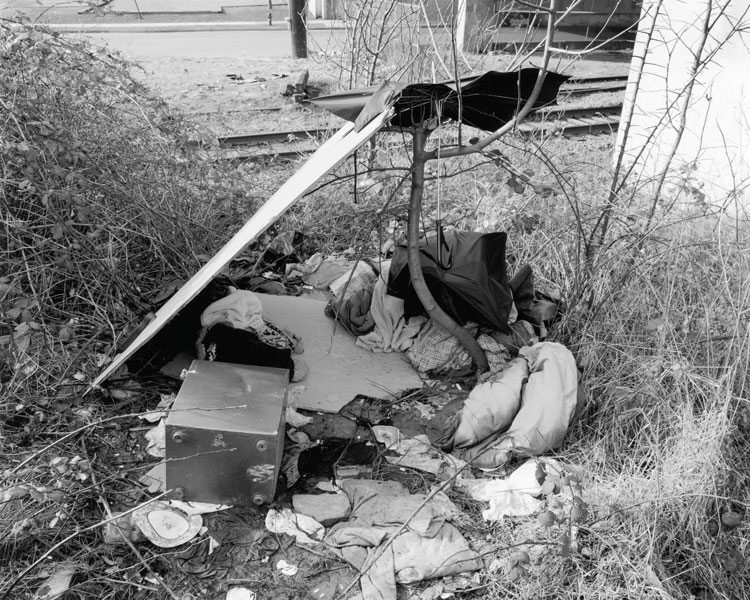[Spring 2010]
Glen Bloom’s interest in contemporary art began during his first year of law school in Edmonton. The building adjoining the law faculty was that of the fine arts faculty; by chance or design, Bloom found that he was spending more time in the latter than the former, and it piqued his interest in art. After one year there, he took a year off with his wife, Deborah Duffy, and together they travelled around Europe, spending their time in museums and galleries in each city they visited. Upon their return to Canada, Bloom finished law school, and he started practising law in 1980.
The firm that Bloom worked for merged with Osler in 1985. His interest in the contemporary art found a natural affinity there, as Osler was the first major law firm to have a contemporary-art collection. Osler’s collection focused exclusively on Canadian work by emerging and mid-career artists. This support in early days was a wise investment, as the holdings include works by Lynne Cohen, Arnaud Maggs, and Betty Goodwin. Acquisitions were made by an art committee that consisted of two partners in the Toronto office, and Bloom expressed interest in joining. It was here that he had the opportunity to hone his interest in art in general, and in contemporary art in particular. I interviewed Bloom in the Ottawa office of Osler.
Johanna Mizgala: Did you see the Osler collection as an integral whole? While there were practical considerations to your focus on photography, it seems as though you were also building something new in Ottawa.
Glen Bloom: The only focus as we developed the collection over the first five years was that the works were photo-based, with some notable exceptions. We did want something distinct in Ottawa from the collection in Toronto. That was the case initially, but over time the Toronto office has also become interested in photography.
JM: That also speaks to a change in the art market. When you began collecting in the 1980s, there were few collectors who were focused on contemporary Canadian photography, whereas today the market is quite mature.
GB: True. Also, I had spent a good deal of time in Vancouver and had access to artists there. I wish I’d bought more work in the early 1990s than I did!
The only focus as we developed the collection over the first five years was that the works were photo-based, with some notable exceptions … over time the Toronto office has also become interested in photography.
JM: I think we all do! I sometimes wish I had acquired more works from some fellow students during our art school days. Now, when you are acquiring work for your personal collection, you and your wife are interested in particular artists, although there does seem to be a natural overlap between works in the Osler collection and those in your home. Let’s talk a bit about the freedom inherent in a private collection.
GB: We have dealt with the office collection in a similar way to the private collection.1 At Osler the art committee became a duo, with Steve Smart in Toronto and me in Ottawa. We would talk to each other about acquisitions, but essentially we were on our own. I had the approach that if anyone wanted to complain about what I was buying, they could come to complain to me. Committees really don’t work, because you end up dumbing down what you purchase. I didn’t feel restrained, except for the fact that we couldn’t have sexually explicit material in the office; that was probably the only thing that we had to shy away from buying. There wasn’t really a difference in focus, although at home more recently I have been interested in books, sculpture, multimedia, and video.
JM: Have you ever been interested in a piece for the firm and then realized that you really wanted it for yourself?
GB: That’s the nice thing about photographs – they are in editions. We’ve got some of John Massey’s Jack Photographs (1992–96) in the office, and we have one at home. There are other artists as well; for example, there are Lynne Cohen pieces in both collections. There haven’t been many circumstances under which I selected something for the office that I really wanted for myself, as the two pursuits are separate. There are some instances – for example, Pascal Grandmaison’s Waiting Photography, Polysix (2003), from a series was being shown unframed, but was framed to hang in our offices, which I had been interested in for home, but it was simply too large.
JM: How large is Osler’s collection at this moment?
GB: If we look only at Ottawa, there are about ninety works. And our own collection has about the same number.
JM: I would imagine that over time, storage space becomes an issue, as your collection is composed primarily of works on paper and you want to be considerate of their requirements.
GB: We do move things around, but fundamentally the art is here to create an environment, and as a corporation we can’t buy things to put them in storage. For one thing, some of the partners would wonder what in the world we were buying them for if they weren’t on display! There is almost an inherent necessity that the works be on the wall.
JM: That is an entirely legitimate requirement when thinking about a corporate collection. It is here to be used in the most literal sense.
GB: Exactly, and because it is an office, there are cleaning staff at night and works get bashed, they get Windex sprayed on them, and you can’t prevent that. It is not a museum.
JM: Are there any works that you think of as the ones that got away? Things that you wish you had acquired but didn’t?
GB: Absolutely. There are some Roy Arden photographs. We bought some works from the series Terminal City when the series was just out, but there were also larger pieces that I wish we had pursued. I did see the first show of Brian Jungen’s running shoes masks at Emily Carr and I kick myself for not buying the whole show because I thought they were so wonderful! Those were definitely things we should have bought. I really like Charles Gagnon’s work, and we have one photograph in the office from his desert series, but we have none of his other works and I have none at home. I would like to have another Lynne Cohen piece – one of the small, early works. I have looked at many of them but haven’t found the right one yet.
JM: Over the years, your eye has changed. Is the collecting experience one in which something has to hit you in the solar plexus and then engage your mind, or do you have a general sense of what you are looking for?
GB: The works in the exhibition at Carleton are somewhat spare, as you can see. That’s an aesthetic that I prefer, but I don’t necessarily go out to look for it. When I do see something that I am interested in, I generally try not to buy it right away. I prefer to go away and really think about whether it does fit in and makes sense when it is an office purchase. It is much easier if it is for me to say I want that. I like to talk to the dealer and talk to the artist, and if it is something that holds up to the test of time, then I know it is right for the collection.
JM: In terms of photography, one of the prevalent issues is the exploration in terms of the sheer size of works – in effect, pushing the boundaries of who might acquire the work. Certain photographs seem almost to have been created for public collections and not for private collectors. Other photographers are investigating nineteenth-century practices, and here too this can be limiting for a collector in terms of how to display the photographs. Do you find that there are works that will be out of reach for these reasons?
GB: Absolutely. There are enormous pieces that are wonderful but just can’t fit on our walls. They are definitely for institutions to acquire. Likewise in terms of installations – we can’t take up an entire room.
JM: Are there places in particular that you go for guidance, or people whose counsel you seek out?
GB: I know a number of artists and dealers whose views I respect and welcome. I also think that writing about art has become much more accessible than it used to be. And I look to what is being shown in contemporary public spaces, the Carleton University Art Gallery and the Ottawa Art Gallery being two great sources here, as well as MOCCA in Toronto. I do still travel a lot, and when I can, I will spend the end of the day either meeting with dealers or visiting galleries before I have to get on the plane.
JM: Have you thought about who will take over for you? What might happen to the collection over the long term?
GB: The Osler collection will continue with the firm. As for our own personal collection, I have been giving thought to donating works to public institutions. One benefit of making a donation is that there may be a vacant space on the walls for a new acquisition.
Johanna Mizgala is a curator and critic based in Ottawa. Her most recent preoccupation is an investigation of the occurrence of humour in early studio portraiture and how such flashes of personality appear to transcend distinctions of race, class, and gender.



